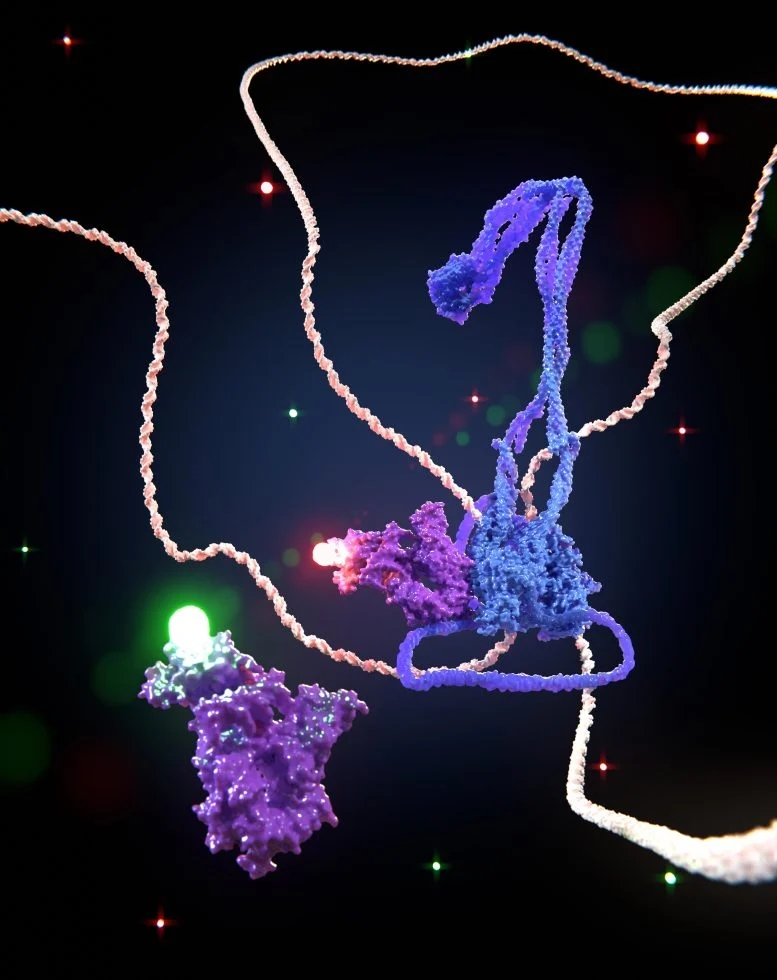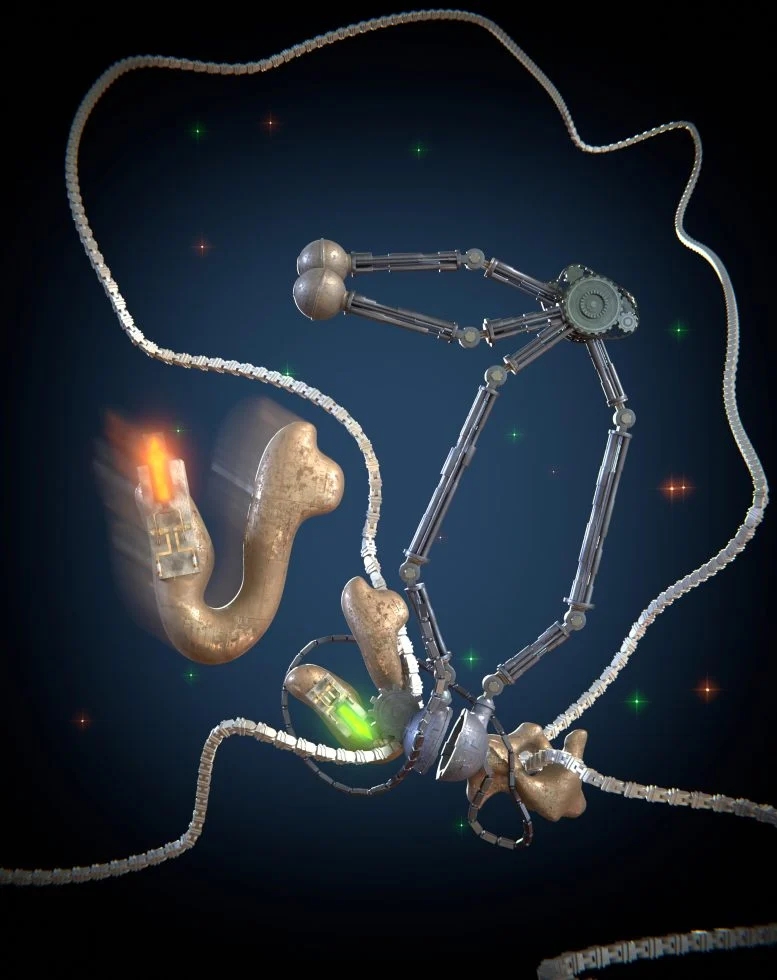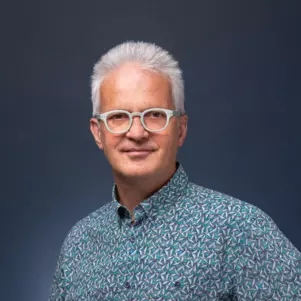 精选
精选
科学家们解决了长期存在的DNA机制之谜
诸平




Fig. 3 Roman Barth Postdoc and Cees Dekker Full Professor
据荷兰德尔夫特理工大学(Delft University Of Technology)2025年1月25日提供的信息,科学家们解决了长期存在的DNA机制之谜(Scientists Solve Long-Standing DNA Machinery Mystery)。
SMC蛋白可以逆转方向,重塑DNA,解决关键的科学争论。这一发现可能会影响对基因相关疾病的研究。来自荷兰代尔夫特理工大学代尔夫特卡夫利纳米科学研究所(Kavli Institute of Nanoscience Delft, Delft University of Technology, Delft, The Netherlands)、奥地利维也纳生物中心分子病理学研究所(Research Institute of Molecular Pathology, Vienna BioCenter, Vienna, Austria)和瑞士洛桑大学(UNIL)生物与医学学院(FBM)基础微生物学系(DMF){Department of Fundamental Microbiology (DMF), Faculty of Biology and Medicine (FBM), University of Lausanne (UNIL), Lausanne, Switzerland}的科学家们已经发现,负责塑造我们的DNA的蛋白质机器可以逆转它们的方向。
以前,人们认为这些在DNA中产生环路的SMC马达(SMC motors)只能向单一方向移动。
这一突破性的发现2025年1月10日已经在《细胞》(Cell)杂志发表——Roman Barth, Iain F. Davidson, Jaco van der Torre, Michael Taschner, Stephan Gruber, Jan-Michael Peters, Cees Dekker. SMC motor proteins extrude DNA asymmetrically and can switch directions. Cell, 2025 Jan 10: S0092-8674(24)01433-8. DOI: 10.1016/j.cell.2024.12.020. 为这些马达如何组织我们的基因组和调节基因活性提供了重要的见解。其实,此文早在2023年12月22日已经在生物预印本文库网站(bioRxiv. https://doi.org/10.1101/2023.12.21.572892. Posted December 22, 2023)发表。
DNA连接(Connecting DNA)
上述论文的第一作者罗马·巴斯(Roman Barth)解释说:“有时,细胞需要快速改变哪些基因应该表达,哪些基因应该关闭,例如对食物、酒精或热量的反应。为了关闭和打开基因,细胞使用染色体结构维护(Structural Maintenance of Chromosomes简称SMC)马达(SMC motors),它就像开关一样连接DNA的不同部分。”
“然而,SMC机器自然不知道该连接哪些部件。它们只是在DNA上的某个地方装载,并开始将其塑造成一个环,直到它们到达一个被迫停止的点。这就是为什么它们严重依赖于探索DNA两侧的能力来找到正确的停止标志。”
变速箱(Gearbox)
代尔夫特理工大学的生物物理学家现在发现,SMC马达可以改变方向,这与之前认为的可能相反。
代尔夫特大学教授、监管这项研究的塞斯·德克(Cees Dekker)说:“我们的实验表明,SMCs暂时从一侧拉DNA,然后切换方向从相反的一侧拉DNA。通过这样做,随着时间的推移,它们可以将DNA从两侧拉入一个环。我们发现所有类型的SMC马达都是如此,其中有很多。”
“你可以把它比作汽车的变速箱:通过手动变速杆,你可以让汽车前进或后退。我们甚至在内聚SMC马达蛋白(cohesin SMC motor protein)中发现了变速杆,蛋白质亚基NIPBL(protein subunit NIPBL)。”
令人印象深刻的纳米技术(Impressive nanotechnology)
为了发现SMC马达的反向齿轮,研究人员使用了一种先进的自制显微镜来观察单个DNA分子上的单个蛋白质。
这本身就是一项令人印象深刻的成就,正如罗马·巴斯解释的那样:“单个细胞包含数百万种蛋白质,而人体由数万亿个细胞组成。提取出一些蛋白质,然后一个一个地观察它们,这是纳米技术的一项非凡壮举,它涉及到比人类头发宽度还小10万倍的纳米尺度成像。”
神经退行性疾病(Neurodegenerative diseases)
“一旦我们了解了SMC分子马达是如何塑造DNA的,我们可能会开始问,在癌症和神经变性等疾病中,是什么出了问题,更重要的是,如何对其进行纠正,”罗马·巴斯说。
“例如,神经系统疾病可能是怀孕早期基因失调的结果。事实上,有一些严重的疾病,如科妮莉亚·德·兰格综合症(Cornelia de Lange syndrome),与SMCs有关,在这些疾病中,胚胎细胞内的马达可能无法正确切换。”
科学在行动(Science in action)
该研究最终解决了科学界对SMCs如何工作的各种相互矛盾的理论的困惑。早期的研究表明,SMCs只能严格地向一个方向移动,而其它研究表明,它们同时从两个方向吸引DNA。
这一发现解决了这些争议。
罗马·巴斯说:“发现SMC马达之间的共性有助于集中和简化SMC研究领域。我们不再需要为每种类型的SMC蛋白寻找新的机制。它还将加速应用科学领域的发展。我很高兴看到这些知识进入制药公司、医院,并最终进入医生办公室造福人类。”
上述介绍仅供参考,欲了解更多信息敬请注意浏览原文和相关报道。
Abstract (DOI: 10.1016/j.cell.2024.12.020)
Structural maintenance of chromosomes (SMC) complexes organize the genome via DNA loop extrusion. Although some SMCs were reported to do so symmetrically, reeling DNA from both sides into the extruded DNA loop simultaneously, others perform loop extrusion asymmetrically toward one direction only. The mechanism underlying this variability remains unclear. Here, we examine the directionality of DNA loop extrusion by SMCs using in vitro single-molecule experiments. We find that cohesin and SMC5/6 do not reel in DNA from both sides, as reported before, but instead extrude DNA asymmetrically, although the direction can switch over time. Asymmetric DNA loop extrusion thus is the shared mechanism across all eukaryotic SMC complexes. For cohesin, direction switches strongly correlate with the turnover of the subunit NIPBL, during which DNA strand switching may occur. Apart from expanding by extrusion, loops frequently diffuse and shrink. The findings reveal that SMCs, surprisingly, can switch directions.
Summary (bioRxiv)
Structural Maintenance of Chromosomes (SMC) complexes organize the genome via DNA loop extrusion. While some SMCs were reported to do so symmetrically, reeling DNA from both sides into the extruded DNA loop simultaneously, others perform loop extrusion asymmetrically toward one direction only. The mechanism underlying this variability remains unclear. Here, we examine the directionality of DNA loop extrusion by SMCs using in vitro single-molecule experiments. We find that cohesin and SMC5/6 do not reel in DNA from both sides, as reported before, but instead extrude DNA asymmetrically, while the direction can switch over time. Asymmetric DNA loop extrusion thus is the shared mechanism across all eukaryotic SMC complexes. For cohesin, direction switches strongly correlate with the turnover of the subunit NIPBL, during which DNA strand switching may occur. STAG1 stabilizes NIPBL on cohesin, preventing NIPBL turnover and direction switches. The findings reveal that SMCs, surprisingly, contain a direction switch subunit.
Highlights (bioRxiv)
l) All eukaryotic SMC complexes extrude DNA asymmetrically.
2) Apparent ‘symmetric’ loop extrusion is the result of frequent direction switches.
3) n human cohesin, loop-extrusion direction changes require exchange of NIPBL.
4) STAG1 stabilizes NIPBL on human cohesin.
转载本文请联系原作者获取授权,同时请注明本文来自诸平科学网博客。
链接地址:https://wap.sciencenet.cn/blog-212210-1470537.html?mobile=1
收藏

